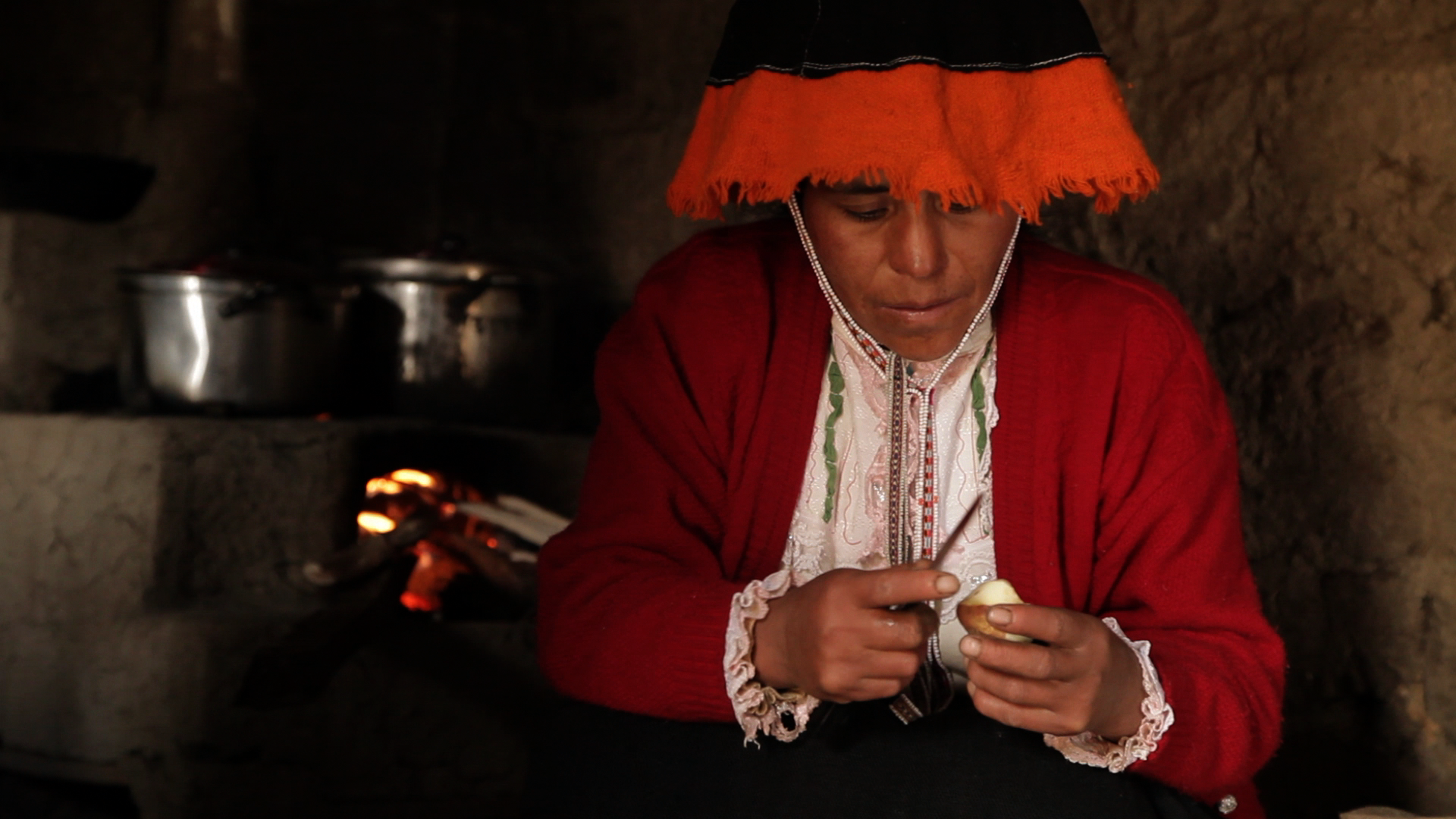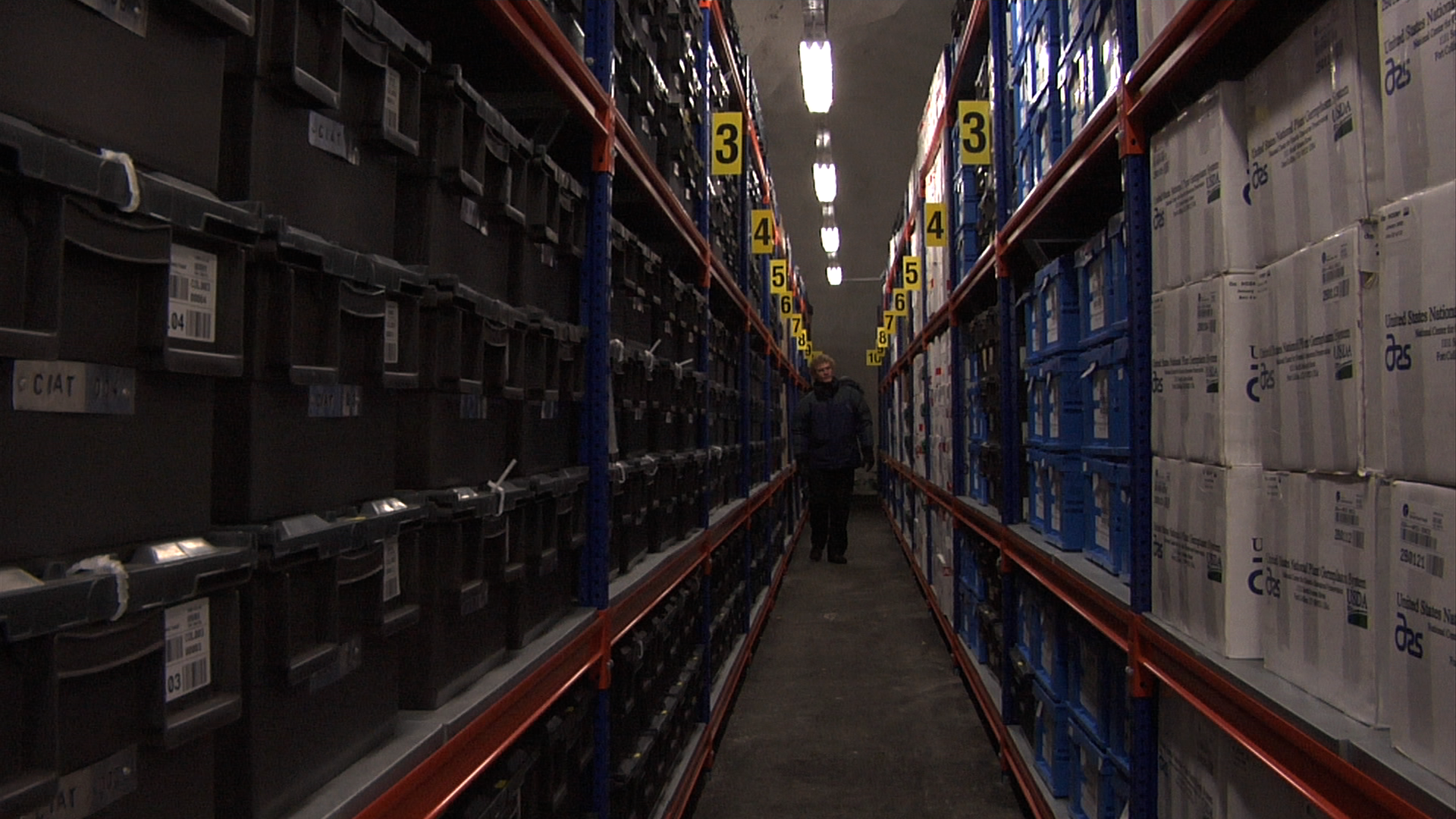A short time ago, I was privileged to preview a screening of a brand new movie, the “Seeds of Time," directed and produced by Sandy McLeod. I came across this movie after being sent a trailer by the Bread Lab at Washington State University Mount Vernon, took a look, and really liked what I saw. It also had a link for obtaining the viewing rights for your group, school, whatever. What group? Then I thought, yes, I do volunteer once a week for The Table, a community kitchen/food bank/social advocacy organization. Yes! So, filled out the online form and waited. Didn’t have long to wait. Co-producer J.D. Marlow got right back to me explaining the details, and how to go about this. To make a long story short, I got the rights, the Table was thrilled to be able to show it at their movie night, and the DVD was shipped.
The Table had me watch the movie first to see what I thought. It is a thoroughly impressive movie, with gorgeous cinematography. The main character is Dr. Cary Fowler, a man who has devoted his life to agriculture, seeds, and hopefully, not to be overly dramatic, humanity. I say hopefully, because agriculture as we know it today is teetering on the edge of disaster: Our crop diversity is at an all time low, between mono-cropping and the extinction of many ancient varieties of food crops. The statistic that brings this all home? 93% of varieties have gone extinct since 1903. More about this later. Couple this with the ongoing crisis of climate change, and the plants just can’t adapt fast enough to save our vulnerable necks.
Photo Courtesy of Seeds of Time
The movie follows Dr. Fowler among others on a journey that takes you completely around the world, but two locations stand out: Svalbard, Norway, and Peru. Svalbard has become the Ark for seeds. Seeds are kept in the deep freeze from collections sent there from all over, be it the U.S., Canada, the Ukraine, Switzerland, Russia, as well as locations from the Far East and Africa. Peru is unique, because the Peruvian potato farmers are desperately attempting to keep, and in a lot of cases, revive, old varieties of their potatoes. It is quite a moving experience seeing them digging their potatoes in their beautiful native dress, coming together with other local groups that didn’t all get along, just to save their heirloom potatoes. You see, there are two ways to save a variety: Put it in a seed bank, or grow it. They took the latter option. They also shared their potato seed so they could be kept for the future. Incidentally, it should be noted that the potato is native to Peru, and has been grown there for at least 13,000 years. That’s right, 13,000 years, and they are threatened now within a generation with extinction from the land becoming too warm.
There are many seed banks in the world, but they are all threatened by natural disaster, equipment failure and the like. Floods, like the ones suffered by Thailand recently, are a large destroyer of seed banks. The Thais lost all their seeds in that flood, thousands of varieties gone. For me personally, the most moving scene was when the woman from the Thai seed bank had to announce to the conference that it was a total loss, struggling to maintain her composure, but finally dissolving into tears. It was a heart-rending scene.
Photo Courtesy of the Seeds of Time
Few people in the world understand the severity of the problem, the aforementioned 93% already gone. Dr. Fowler, his colleagues, and many others in the field, work hard to save us from ourselves, but most people don’t even realize the problem exists. He himself is suffering from cancer, and for him, he realizes, time is running out, but it’s also running out for us. Time is not something we can afford to waste. Before watching the Seeds of Time, I heard about an initiative by a local veterinarian in the Perth, ON area, who is on the hunt for heirloom apple trees, searching for old varieties. They were searching parts of Lanark County to see if they could find any old trees, wild, but still alive. Don’t know how that turned out, but I would sure love to know. The question remains though: We are too quickly running out of time to find these plants. Will we make it?
Movie Night
At last, the big premiere at The Table. We (Bob, my husband, and I) trooped in to see the movie was starting. It was a small crowd, but passionate, as I later found out. Why? They were all gardeners, and they all got it. They watched with rapt attention, a gasp going up at the mention of the 93%. Afterward, we had a discussion, the passion showing for where we have been, and where we’re headed. Some folks had bought seeds at the local Seedy Sunday (part of the Seed Savers, I believe), but said, some of their seeds never sprouted. I mentioned the complete lack of Italian tomatoes plants for sale in the spring: I myself grow them to put up tomato puree for sauce over the winter. Not only can you not get the actual plants, but you’re limited to one or two varieties at best, Roma or Romano. As far as I can tell, there isn’t a lot of difference between the two. One woman admitted she had no idea this loss of diversity was even a problem. The Seeds of Time changed all that.
Finally...
I wish to thank J.D. Marlow for the speedy responses and making the Seeds of Time available to us. Thanks J.D.!
You can always follow the further adventures of Sue at www.svanslooten.com.
Helpful links:
The Seeds of Time: www.seedsoftimemovie.com
The Seeds of Time Trailer: https://vimeo.com/73726895
The Table Community Food Centre: http://thetablecfc.org/
Svalbard, Norway Seed Bank Photo Courtesy of Seeds of Time


